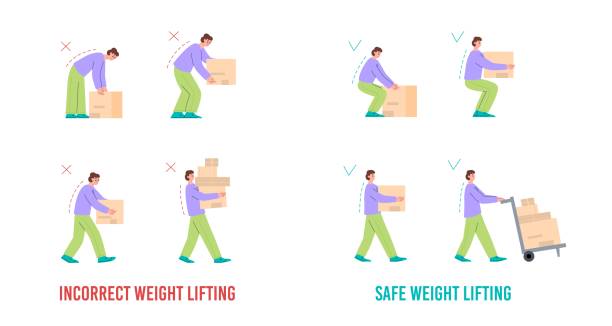Table of Contents
ToggleTo effectively manage and prevent tendonitis from disrupting your daily life, it is crucial to identify and address its triggers. By recognizing which habits contribute to this condition, you can take proactive steps toward alleviating pain and promoting healing.
Whether it’s at work or during leisure activities, pinpointing these culprits can make all the difference.
Ignoring potential triggers may exacerbate your symptoms and lead to long-term consequences on joint health.
By focusing on prevention rather than solely relying on treatment after symptoms arise, you can regain control over your well-being while maintaining an active lifestyle free from debilitating pain.

Understanding Tendonitis
The Unseen Heroes of Movement
Tendons, those tough and fibrous tissues, are the unsung heroes that connect our muscles to our bones.
They transmit the force generated by our muscles, allowing us to perform a wide range of activities from running marathons to simply picking up a cup of coffee.
Tendons are built for durability, composed primarily of collagen fibers arranged in tight parallel bundles.
Their remarkable structure enables them to resist tension and withstand considerable stress.
When subjected to repetitive or excessive strain, these resilient tendons can become inflamed and irritated – a condition commonly known as tendonitis.
Causes and Risk Factors Behind Tendonitis
Tendonitis typically stems from overuse or repetitive motions that strain the tendons beyond their capacity.
Activities like typing incessantly on keyboards or engaging in sports without proper warm-up are prime culprits for triggering tendonitis pain.
When we consistently subject our tendons to these repetitive stresses without giving them adequate time for recovery, inflammation ensues.
Athletes who participate in high-impact sports such as running or tennis are particularly prone to experiencing tendon issues like Anterior Tibial Tendonitis or Tennis Elbow due to the repetitive nature of their movements.
Other risk factors include poor posture, inadequate conditioning or training techniques, age-related degeneration, and even genetics.
Common Bad Habits that Trigger Tendonitis Pain
Repetitive Motions: The Culprits Behind Many Cases of Tendonitis
Repetitive motions, such as typing on keyboards for extended periods without breaks, have emerged as one of the primary villains triggering tendon inflammation.
But keyboards aren’t the only culprits; smartphones have also jumped to the forefront in wreaking havoc on our tendons.
Whether we’re scrolling through social media or sending rapid-fire messages, most of us adopt poor posture while using our beloved handheld devices.
We hunch over, neck bent at an unnatural angle, thumbs furiously tapping away. It ends up taking a toll on you.
Our anterior tibial tendons can attest to this modern-day epidemic. And let us not forget about sports enthusiasts who don’t warm up properly or neglect proper technique.
Engaging in repetitive sports movements without adequate preparation puts immense strain on our tendons and increases the likelihood of developing tendonitis.

Incorrect Ergonomics: How Your Daily Habits Can Contribute to Tendonitis Pain
Improper lifting techniques play a significant role in triggering tendonitis pain. Whether you’re hauling boxes or picking up heavy objects off the floor, failing to use proper form can lead to stress on the tendons in your back or legs.
So next time you feel tempted to channel your inner Hulk and lift without caution, remember that maintaining good technique is not only essential for muscle gains but also for protecting those delicate tendons.
Repetitive motions and incorrect ergonomics stand as two formidable foes in our battle against tendonitis pain.
By addressing these bad habits head-on and making conscious changes in our daily routines, we can alleviate the strain on our tendons and pave the way for a healthier, pain-free future.
Lifestyle Factors that Aggravate Tendonitis Pain
Sedentary Lifestyle
When it comes to tendon health, an active lifestyle is crucial. Prolonged periods of sitting or immobility can lead to muscle imbalances, one of the main culprits behind tendonitis.
Muscle imbalances occur when certain muscles become weaker and others become overused due to lack of movement. This imbalance puts excessive stress on the tendons and can trigger symptoms of tendonitis. It can also cause pain and inflammation in the affected tendons.

Reduced Blood Flow from Inactivity to Tendons
When we engage in physical activity, our muscles contract and relax, promoting blood flow throughout the body. This increased circulation delivers vital nutrients and oxygen to our tissues, including our tendons.
However, when we remain sedentary for extended periods, such as sitting at a desk for hours on end or binge-watching our favorite TV shows without moving an inch, blood flow to the tendons decreases significantly.
As a result, these connective tissues receive fewer nutrients and less oxygen than they need for optimal function.
This diminished blood supply weakens the tendons over time, making them more susceptible to injuries like tendonitis.
Similarly, our tendons need regular movement to thrive and stay healthy.

Nutrition’s Impact on Tendon Health
An often overlooked factor is the impact of our diet on the health of these crucial connective tissues.
Surprisingly, nutrition plays a significant role in the synthesis of collagen – the main component of healthy tendons.
Collagen is a protein that provides structure and elasticity to tendons, ensuring their strength and flexibility. Without sufficient collagen synthesis, tendons become weaker and more prone to injuries like tendonitis.
Poor nutrition can hinder this synthesis process by depriving our bodies of essential nutrients required for collagen production.
Consuming excessive amounts of processed foods high in sugar or unhealthy fats can lead to inflammation throughout the body, including the tendons.
Inflammation not only exacerbates pain but also hampers the healing process.
Include foods rich in:
- Vitamins, especially vitamin C
- Minerals, particularly zinc
- Omega-3 fatty acids (e.g., from fish)
- Antioxidants (found in fruits and vegetables)
- Lean proteins (like chicken or tofu)
- Whole grains
- Healthy fats, such as olive oil
Tips to Overcome Bad Habits and Tendonitis
Ergonomic Adjustments for Workstations & Activities
When it comes to combating tendonitis and finding relief from pain, making ergonomic adjustments to your workstations and everyday activities is crucial.
Let’s start with your workstation setup. Ensure that your computer screen is at eye level, allowing you to maintain a neutral neck position.
Position your keyboard so that it is at elbow height, ensuring that your wrists are straight when typing. Consider investing in a wrist rest for additional support.
Take breaks every 30 minutes to stretch your muscles and give your tendons a break from repetitive tasks. Incorporate simple exercises like wrist circles or shoulder rolls into these breaks to promote blood flow and flexibility.
Proper Keyboard Placement and Wrist Support
One of the most common culprits behind tendonitis is improper keyboard placement. Ensure that the keyboard is positioned directly in front of you to avoid awkward angles or excessive reaching.
Keep your wrists straight while typing, avoiding any bending or extension that can strain the tendons.
Consider using ergonomic keyboards or wrist supports to provide additional comfort and reduce strain on the tendons.
These aids help maintain proper alignment of the hands, wrists, and forearms while typing or using the mouse.
It’s also worth mentioning that practicing good posture while sitting can significantly alleviate tendonitis pain.
Sit with both feet flat on the floor, maintaining a relaxed yet upright position.
Avoid slouching or hunching over as this puts unnecessary stress on various tendons throughout the body.

Conclusion
Combating tendonitis requires a proactive approach that involves ditching bad habits triggering pain while adopting new ergonomic habits.
By making simple adjustments to your workstations and daily activities, such as proper keyboard placement, wrist support, and regular breaks for stretching, you can alleviate tendonitis pain and set the stage for improved tendon health.









